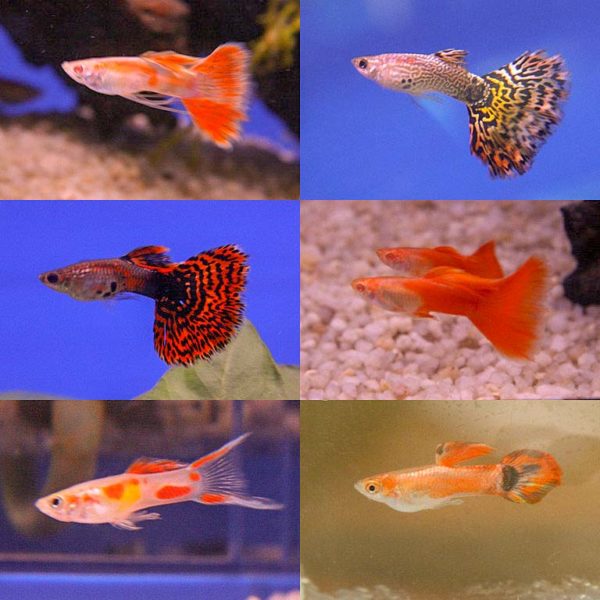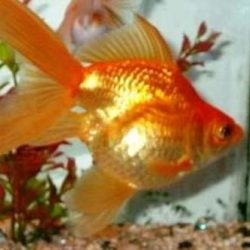Ornamental aquarium > Loaches – Cobitidae > History of ornamental guppies
Guppies are ornamental tropical fish belonging to the genus Poecilia. The wild tropical guppies were first discovered by a British naturalist, Robert John Lechmere Guppy (born August 15, 1836 and died August 5, 1916 ) in Trinidad in 1866.
These tiny specimen of guppies collected in the rivers of Trinidad were sent by John Lechmere to the British Museum.
Albrecht Karl Ludwig Gotthilf Günther FRS (also known as Albert Charles Lewis Gotthilf Gunther, born October 3, 1830 and died February 1, 1914), working at the museum as Keeper in Zoology department, named the specimen as Girardinus guppii in honour of John Lechmere.
The genus name Giradinus was given in honour of Charles Girard, a French ichthyologist. Though John Lechmere is credited with the discovery, De Filippi found guppies in Barbados in 1862 and named them Lebistes poeciliodes.
Another German biologist Julius Gollmer found them 1858 and sent them to Berlin. In 1859, Wilhelm Karl Hartwig Peters identified the females and named them as Poecilia reticulata. The males were later named as Giradinus Guppyi in Berlin.
Later from tropical South America various strains of these guppies fish were reaching museums around the world being mistaken for new species and more than ten scientific names were given by different ichthyologists.
The taxonomists Rosen and Bailey found the name Poecilia reticulata preferable and the scientific community has settled for this name for these ornamental fish as senior synonym.
Poecilia reticulatus, Acanthophacelus guppii, Poecilia reticulate, Acanthophacelus reticulatus, Lebistes reticulatus, Girardinus guppii, Lebistes poeciloides, Girardinus reticulatus, Lebistes poecilioides, Haridichthys reticulatus, Poecilioides reticulatus and Heterandria guppyi are the junior synonyms of this ornamental pet.
However the common name ‘guppies’ still remains for these tropical ornamental fish. The wild guppies are natives of Trinidad and Tobago, Venezuela, Virgin Islands, Guyana, Barbados and Brazil.
They were introduced to many countries of the world for a different purpose. It was hoped that the these ornamental tropical fish will eat mosquito larvae and help in the fight against malaria.
However these tropical fish have negatively affected the native fauna of fish. Live ornamental tropical guppies were brought in to Europe around 1910 and were bred. Considering the reproductive rate, tropical guppies were nick named as million fish (Millionenfisch).
During early 1900 these ornamental tropical varieties were also imported into United States. At first wild tropical ornamental swordtail guppies were found and were sought after.
Later an ornamental tropical double swordtail guppies fish was developed in 1930. In 1950’s selective breeding was taken up by many pet enthusiasts and numerous strains with colourful ornamental fancy veiltail were developed.
This kindled the interest in ornamental guppies and big momentum in the breeding and genetics of ornamental guppies picked up. Paul Hahnel, from Germany was the pioneer in ornamental fancy tail strains development.

In Britain, W. George Phillips developed ornamental ‘Coffer tail’ varieties. Later on he also developed ornamental English Leopard Guppies (English Lace Guppies) with striped patterns.
These ornamental tropical fish were the forerunners of all the snakeskin strains developed throughout the world. From these ornamental guppies, half black fish were developed by Eduard Schmidt Focke.

